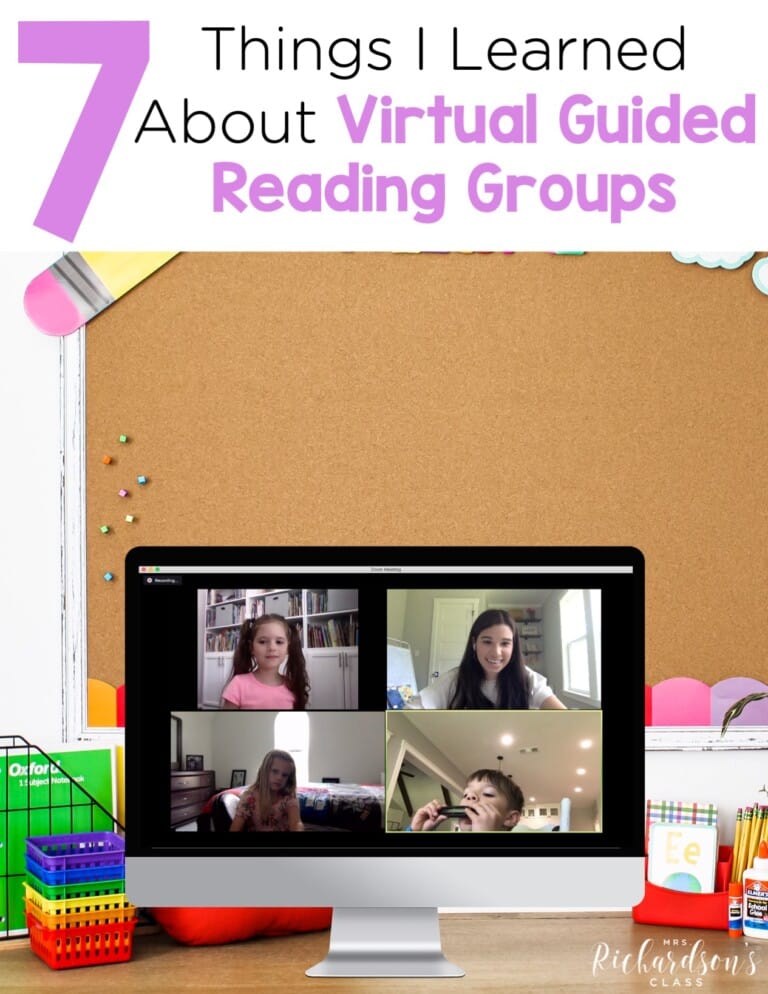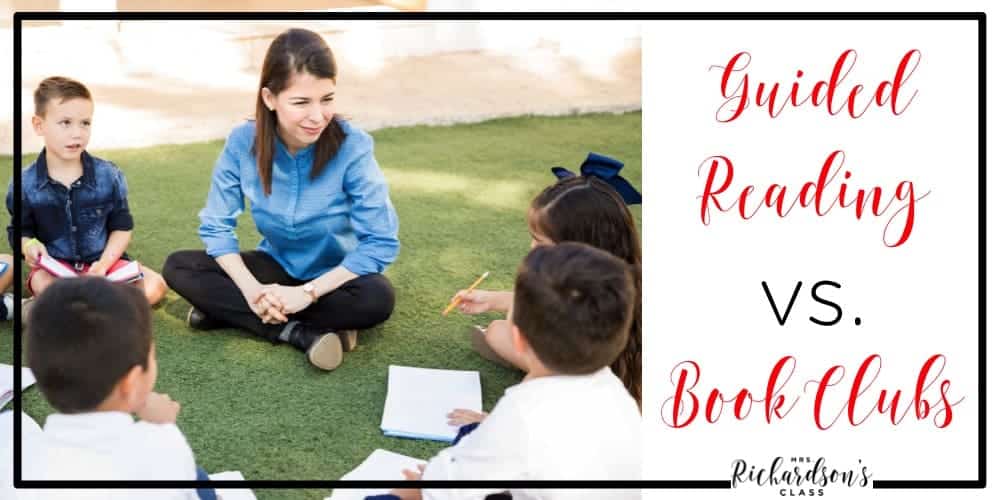


I’m sure you’ve heard me talk about guided reading by now, but what about book clubs? Do they have a place in a balanced literacy approach in the classroom? Friends, I think they do!

Both of these options provide many benefits to our learners. An opportunity for students to practice reading in a group setting, discuss what they have read, and apply reading strategies they have learned are just a few. Guided reading and book clubs (also called literature circles) also motivate students by giving a purpose to their reading. The groups in both cases are fluid and flexible, meaning they may change frequently. Keeping our learners engaged while reading is key! Let’s go over the basics of each.
Guided reading holds such an important place in the classroom that follows the gradual release model. During guided reading, students are practicing reading at an instructional level with the teacher there to give guiding instruction. Students are in groups of two to six based upon reading level and/or reading strategies that need to be mastered. The teacher chooses the books on the group’s instructional level, provides an introduction and explicit instruction, and then listens to the students read quietly to themselves. After reading the book 2-3 times, there might be a discussion, word work, a writing extension, or comprehension activity based on the group’s needs. Guided reading ultimately serves as a time of coaching, or guiding support, so students can read at their instructional level and advance beyond that eventually.
HERE is a round-up of my favorite posts about guided reading. Check them out for even more details and how to get it started in your classroom.
Books clubs are more of a student-led approach to independent reading. These groups consist of four to six students based on a shared interest in a book or reading topic. Students read an assigned amount of text independently. Then, they have some kind of response to bring back to the group meeting to discuss. As students get the hang of book clubs, they become more and more able to make decisions like book choice, amount to read, what type of response they might want to do, and questions/topics to discuss in the meeting. The teacher’s role is to coach groups, scaffold learning as needed, and confer with groups to help push the conversations deeper. There are so many different ways to work the details out for a book club, but the main key is that students are taking ownership of what they read and what they discuss to further their reading abilities.
Here is a little visual break down for you!
While guided reading is truly the heart of my reading instruction in my classroom, book clubs provide excellent support for reading comprehension, speaking skills, implementing reading strategies, and discussing texts. I highly recommend trying to implement both!
Comment below and let me know where you’re at with guided reading and book clubs! I’d love to hear what they each look like in your classroom.
pin it

Want to use the latest research to boost your readers during small groups? This FREE guide is packed with engaging ideas to help them grow!

I’m a K-1 teacher who is passionate about making lessons your students love and that are easy to implement for teachers. Helping teachers like you navigate their way through their literacy block brings me great joy. I am a lifelong learner who loves staying on top of current literacy learning and practices. Here, you’ll find the tools you need to move your K-2 students forward!


| Cookie | Duration | Description |
|---|---|---|
| cookielawinfo-checkbox-analytics | 11 months | This cookie is set by GDPR Cookie Consent plugin. The cookie is used to store the user consent for the cookies in the category "Analytics". |
| cookielawinfo-checkbox-functional | 11 months | The cookie is set by GDPR cookie consent to record the user consent for the cookies in the category "Functional". |
| cookielawinfo-checkbox-necessary | 11 months | This cookie is set by GDPR Cookie Consent plugin. The cookies is used to store the user consent for the cookies in the category "Necessary". |
| cookielawinfo-checkbox-others | 11 months | This cookie is set by GDPR Cookie Consent plugin. The cookie is used to store the user consent for the cookies in the category "Other. |
| cookielawinfo-checkbox-performance | 11 months | This cookie is set by GDPR Cookie Consent plugin. The cookie is used to store the user consent for the cookies in the category "Performance". |
| viewed_cookie_policy | 11 months | The cookie is set by the GDPR Cookie Consent plugin and is used to store whether or not user has consented to the use of cookies. It does not store any personal data. |
3 Responses
Hello. I have done a bit of both (GR and BC). I currently teach 9th-grade reading intervention. The majority of my students are reading at the 6th-grade level and below (many are below). My desire is to find a way to do guided reading with older students with age/interest appropriate materials. I am only able to meet with students two-three times per week. My thought for next year is to start with guided reading (possibly using short stories) and move in to book clubs for the second semester. I am interested in your guided reading boot camp.
Thanks
Thank you so much!
Thank you for sharing! I am in the process of trying to implement book clubs/lit circles to supplement my guided reading instruction. While I am super excited about it, I am a total amateur! My hopes are to build a reading community that supports reading skills and builds stronger readers. I want my classroom to be a place where students are excited about and engaged in reading!